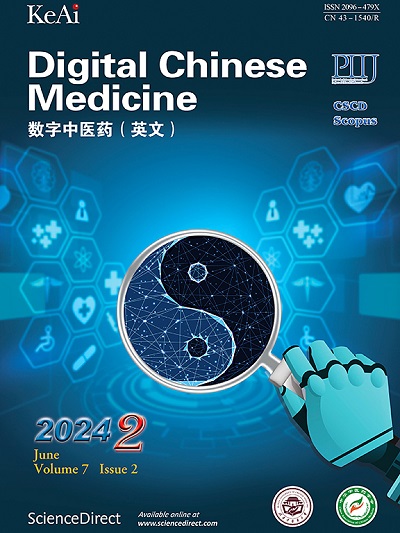Analysis on pulse features of coronary heart disease patients with or without a history of ischemic stroke
Q3 Medicine
引用次数: 0
Abstract
Objective
To evaluate the capability of wrist pulse analysis in distinguishing three physiological and pathological conditions: healthy individuals, coronary heart disease (CHD) patients without a history of ischemic stroke, and CHD patients with a history of ischemic stroke.
Methods
Study participants were recruited from Shuguang East Hospital, Yueyang Hospital of Integrated Traditional Chinese and Western Medicine, and Shanghai Municipal Hospital of Traditional Chinese Medicine, affiliated with Shanghai University of Traditional Chinese Medicine, from April 15 to September 15, 2021. They were categorized into three groups: healthy controls (Group 1), CHD patients without a history of ischemic stroke (Group 2), and CHD patients with a history of ischemic stroke (Group 3). The wrist pulse signals of the study participants were non-invasively collected using a pulse diagnosis instrument. The linear time-domain features and nonlinear time-series multiscale entropy (MSE) features of the pulse signals were extracted using time-domain analysis and the MSE methods, which were subsequently compared between groups. Based on these extracted features, a recognition model was developed using a random forest (RF) algorithm. The classification performance of the models was evaluated using metrics, including accuracy, precision, recall, and F1-score derived from confusion matrix as well as the area under the receiver operating characteristics (ROC) curve (AUC).
Results
A total of 189 participants were enrolled, with 63 in Group 1, 61 in Group 2, and 65 in Group 3. Compared with Group 1, Group 2 showed significant increases in pulse features H2/H1, H3/H1, W1, W2, and W2/T, and decreased in MSE1 – MSE7 (P < 0.05), while Group 3 showed significant increases in pulse features T5/T4, T, H1/T1, W1, W2, AS, and Ad, and decreased in MSE1 – MSE20 (P < 0.05). Compared with Group 2, Group 3 demonstrated notable increases in H1/T1 and As (P < 0.05). The RF model achieved precision of 80.00%, 61.54%, and 61.54%, recall of 74.29%, 60.00%, and 68.97%, F1-scores of 70.04%, 60.76%, and 65.04%, and AUC values of 0.92, 0.74, and 0.81 for Groups 1, 2, and 3, respectively. The overall accuracy was 67.69%, with micro-average AUC of 0.83 and macro-average AUC of 0.82.
Conclusion
Differences in pulse features reflect variations in arterial compliance, peripheral resistance, cardiac afterload, and pulse signal complexity among healthy individuals, CHD patients without a history of ischemic stroke, and those with such a history. The developed pulse-based recognition model holds the potential in distinguishing between these three groups, offering a novel diagnostic reference for clinical practice.
有或无缺血性脑卒中史冠心病患者脉搏特征分析
目的评价腕部脉搏分析对健康人、无缺血性脑卒中史的冠心病患者和有缺血性脑卒中史的冠心病患者三种生理病理状况的鉴别能力。研究对象于2021年4月15日至9月15日从上海中医药大学附属曙光东方医院、岳阳中西医结合医院和上海市中医医院招募。他们被分为三组:健康对照组(1组)、无缺血性卒中史的冠心病患者(2组)和有缺血性卒中史的冠心病患者(3组)。研究参与者的手腕脉搏信号使用脉搏诊断仪无创采集。采用时域分析和MSE方法提取脉冲信号的线性时域特征和非线性时间序列多尺度熵(MSE)特征,并进行组间比较。在此基础上,利用随机森林(RF)算法建立识别模型。使用指标评估模型的分类性能,包括准确度、精密度、召回率和由混淆矩阵得出的f1分数以及受试者工作特征(ROC)曲线下的面积。结果共入组189例,其中组1 63例,组2 61例,组3 65例。与1组比较,2组脉搏特征H2/H1、H3/H1、W1、W2、W2/T显著升高,MSE1 - MSE7显著降低(P <;0.05),而组3脉搏特征T5/T4、T、H1/T1、W1、W2、AS、Ad显著升高,MSE1 - MSE20显著降低(P <;0.05)。与2组比较,3组H1/T1和As明显升高(P <;0.05)。RF模型的准确率分别为80.00%、61.54%和61.54%,召回率分别为74.29%、60.00%和68.97%,f1得分分别为70.04%、60.76%和65.04%,1、2和3组的AUC值分别为0.92、0.74和0.81。总体准确度为67.69%,微观平均AUC为0.83,宏观平均AUC为0.82。结论脉搏特征的差异反映了健康人、无缺血性脑卒中史的冠心病患者和有缺血性脑卒中史的冠心病患者在动脉顺应性、外周阻力、心脏后负荷和脉搏信号复杂性方面的差异。所开发的基于脉冲的识别模型具有区分这三组的潜力,为临床实践提供了新的诊断参考。
本文章由计算机程序翻译,如有差异,请以英文原文为准。
求助全文
约1分钟内获得全文
求助全文
来源期刊

Digital Chinese Medicine
Medicine-Complementary and Alternative Medicine
CiteScore
1.80
自引率
0.00%
发文量
126
审稿时长
63 days
期刊介绍:
 求助内容:
求助内容: 应助结果提醒方式:
应助结果提醒方式:


